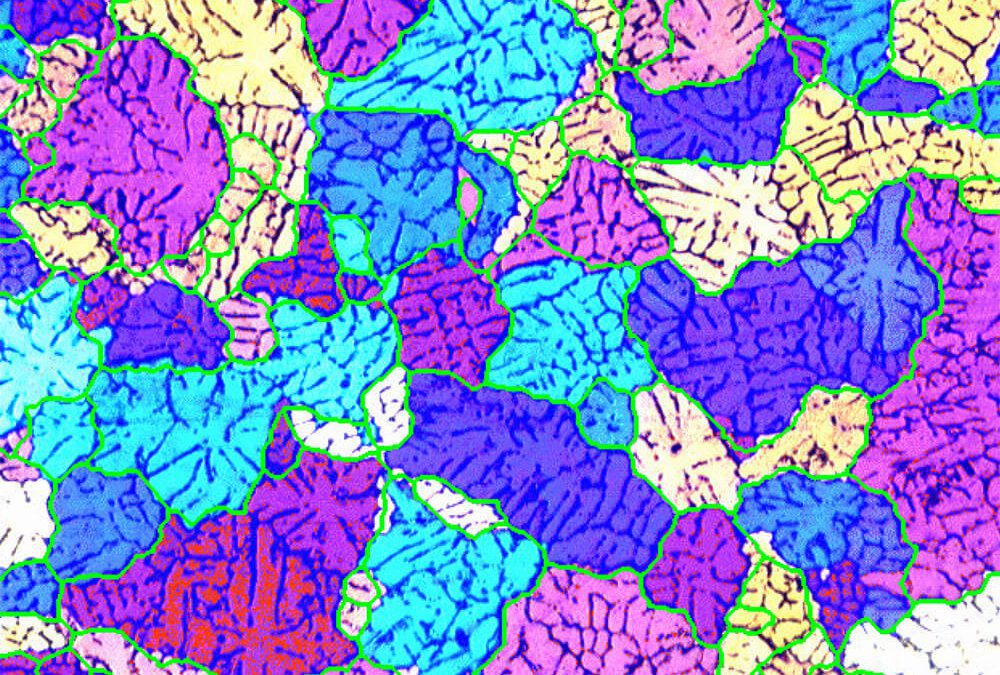Below are some of the most relevant questions asked during the Grain Size webinar hosted by ASTM International. The answers are provided by Marc Lavallée, Global Business Development Manager at Clemex Technologies.
Can we use Clemex software to measure interlamellar spacing of pearlite?
Yes, you can but you need to have very good optics like APO lens to maximize the optical resolution. You can make a routine in Vision PE to isolate the pearlitic grains, eutectoid ferrite and then measure the average thickness of the lamellar ferrite.
Do you have resources for etching procedures to reveal grain boundaries in martensitic and bainitic steels?
There are many good etching books. One of them being the George Vander Voort’s Etching to Reveal Microstructure.
How can you tell the difference between recrystallized and non-recrystallized grains?
You should not, because you would compare grains with deformation vs grains without deformation, hence looking at two different structures of the same material.
Is it possible to apply this to fully pearlitic microstructures?
We have not tested it on fully pearlitic microsctuctures but in theory it should work.
Can we measure crystal size scattered in a glass matrix?
No, this application is not resolved with an optical microscope. However, you could find pertinent information in the book from Brian R. Pamplin called Crystal Growth.
Can you measure martensite plate size rather than prior-austenitic grain size in carburizing bearing grades?
No, there is not enough resolution and magnification on an optical microscope to measure the martensitic plate size.
How did you identify the grain boundaries in martensitic stainless steels?
The method uses recent machine learning algorithms and image processing techniques which identify the boundaries. The boundaries are defined by the orientation of the martensitic lamellar (packets) which varies from one grain to another.
Have you had success with grain size of WC grains 5um and finer?
Yes, this is possible with the proper magnification and good optics.
Have you ever encountered a situation where a worst-case grain size measurement has been requested?
Yes, this is called ALA and the standard is ASTM E930.
Can the technique be used to estimate the intermetallic phase (eg. sigma phase) in duplex stainless steels?
Yes, it would not use the Martensitic tool but other functionalities of Vision PE.
Can we use the Clemex material analysis software with any microscopes?
Yes, Clemex systems can be used with any microscope on which a Clemex camera can be added and used for live images.
How was the algorithm for the difficult structures verified?
It was compared to a grain size chart (as it is done in labs ) by people that do this evaluation on a daily basis.
How would your software handle a material with porosity and a secondary solid phase?
There is a second algorithm developed for this type of event.
I have Vision PE. Could I know how you proceed to do the technique to measure the grain size on martensite?
You would need to update your software through the Clemex Care program to the current version to have access to it.
Do you consider uncertainty in measurement of grain size while reporting the final result? If you do, what are the factors you would consider while calculating the uncertainty?
The software calculates the relative accuracy and the confidence interval. This data is used as information about the results rather than to define grain size assessment.
What grain boundary detection method was used for the difficult cases shown in the presentation?
The new Martensitic toolbox instruction. To access it, you would need to update your software via the Clemex care program to get the current version.


